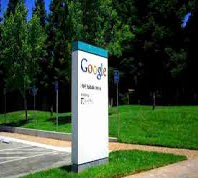HRM and Performance Sharpening Line of Sight Order Instructions: For this assignment, you will need to read the following article:

Strategy, human resource management, and performance: Sharpening line of sight’.
Download the article from the following link:
http://ac.els-cdn.com.ezproxy.liv.ac.uk/S1053482211000490/1-s2.0-S1053482211000490-main.pdf?_tid=f223fe46-46fe-11e5-9b4c-00000aacb360&acdnat=1440049830_f16af7fae9c12d4c4ff7b4a805d710b1
I will send the article by email as well.
After you have read the article, complete the following:
Identify and analyze the relationship between an organization’s HR strategies and performance outcomes.
HRM and Performance Sharpening Line of Sight Sample Answer
Success in an organization is dependent on many factors. Some of the core factors that brings success in an organization included; efficiency in operations as a result of individual, group and organization performance, customer satisfaction and sustained competitive advantage over other competitors in the market. Human resource is considered as a source of competitive advantage (Buller, & McEvoy, 2012). This is because each and every activity in an organization is done people working in the organization. Therefore, human resource strategies and practices such as recruitment, selection and development of employees influence organization performance.
Previous research shows that effective implementation of strategy by Human resource in the organization is important. Its importance is exhibited as a support activity, and when integrated with other value chain activities in the organization. Companies utilize human resource strategies to achieve sustainable competitive advantage. The relationship between organization’s human resource strategies and performance outcome can be understood in light of the following different views. That is Resource-based view, human capital development and social capital development.
Resource-based view: The performance of organization is linked with the amount of resources a firm possesses. Resources such as capital, machinery, intellectual property and human resource are a source of competitive advantage. The resource-based view makes an assumption that firms are not identical in nature, but rather unique depending on the resource they own (Guest, 2011). Therefore, a firm will attain sustainable competitive advantages when it possesses resources that are rare, valuable, non-transferable, non-imitable, non-substitutable, and possess the ability to utilize such resources. Therefore, Human Resource Management practices help to develop valuable, rare, and difficult to imitate or to substitute workforce for the organization. The HR department is responsible for developing organization capabilities to achieve the firm’s strategic goals.
Human capital development: The HR strategies assist in developing human capital that directly impacts on the organization’s performance. Human capital is defined by the knowledge, skills and abilities that individual employee possess or as a team (Buller & McEvoy, 2012). Human Resource practices, for instance, recruitment, selection and development of employees through training, motivation, and support help to improve the organization performance. Therefore, by developing a unique team of workers, the human resource strategies influence the performance of the company.
Social capital development: The Human Resource enhances employee and organization performance through the development of social capital. Social capital refers to the nation of relationships that is, social processes and structures established between people within the organization and outside with the different stakeholders of the organization. Firms with high level of social capital are perceived to have a competitive edge over its competitors and thus perform better (Alfes et al., 2012). The human resource management handles the social development of employees through the encouragement of active participation at work, working together as a team, motivation of employees with the objective of improving organizational performance and thus organization sustainability.
In conclusion, HR practices and strategies in developing a valuable team of employees help to give an organization competitive advantage in the business environment. The HR helps in developing a potentially valuable human capital through HR practices such as selection, recruitment, and training to improve their performance (Bratton & Gold, 2012). As such, influence performance in the light that more positive resources are developed resulting in better organization’s performance.
HRM and Performance Sharpening Line of Sight References
Buller, P. F., & McEvoy, G. M. (2012). Strategy, human resource management and performance: Sharpening line of sight. Human resource management review, 22(1), 43-56.
Alfes, K., Shantz, A., & Truss, C. (2012). The link between perceived HRM practices, performance and well‐being: The moderating effect of trust in the employer. Human Resource Management Journal, 22(4), 409-427.
Buciuniene, I., & Kazlauskaite, R. (2012). The linkage between HRM, CSR and performance outcomes. Baltic Journal of Management, 7(1), 5-24.
Guest, D. E. (2011). Human resource management and performance: still searching for some answers. Human Resource Management Journal, 21(1), 3-13.
Bratton, J., & Gold, J. (2012). Human resource management: theory and practice. Palgrave Macmillan.




